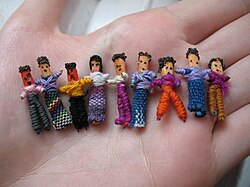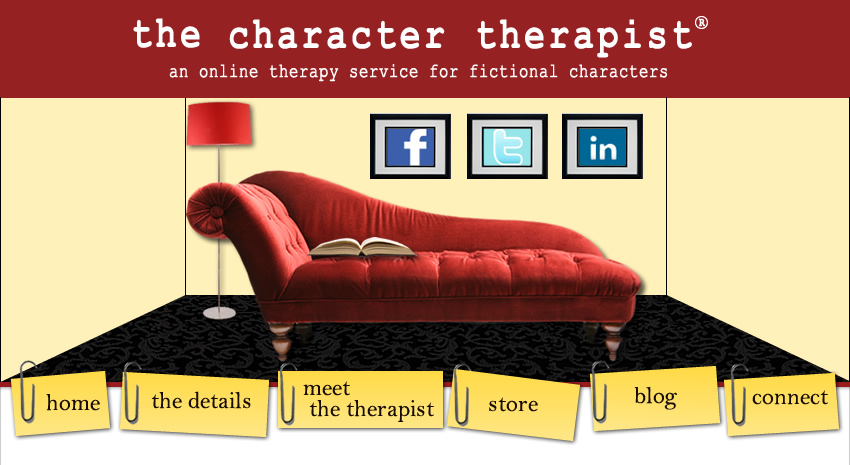Cathy wants to know: What are some possible behaviors that he would take on as a result of this? What steps would a counselor take to help him through the trauma? How long would the process take?
I love questions like this, Cathy, mainly because there are some general predictors of human behavior, but nothing is set in stone. This boy witnessed a horrific sight. Not only that, but he had a personal connection to. A young child is going to feel tremendous guilt, but because of his development
 al level, he won’t be able to convey this any other way except by anger.
al level, he won’t be able to convey this any other way except by anger.
It’s important to remember that children have the capacity to feel the same things adults do, but they lack the ability to communicate those emotions. Very typically, children will begin to “act out,” as this is the only way they have of expressing themselves. Unfortunately, adults all too often misread the acting out and think the child is doing bad things just to be annoying and that they can control it better. Maybe they can, but just as an adult might utter a curse quickly after enduring pain or blow up at a spouse for belittling them in public, children have reactions, too. But they might not be able to immediately express what they felt. It may take months or even years.
So my first suggestion to you is to consider some way in which this child could act out…and school is the primary place this would happen. Children spend more time at school than anywhere else, so this makes sense. Some typical behaviors you might give him would be hitting, kicking, biting, spiting, choking (most of which would occur on the playground or in the cafeteria when the day’s activities aren’t as structured…these behaviors are less likely in the classroom); defiance, disobedience, inattention, self-isolation, daydreaming, not getting work done on time or at all (all of which could happen at any time). Many of these could also happen at home or with other authority figures at church, baseball practice, what-have-you.
You mentioned a fear of horses as a possibility.
 Definitely. As an adult, if I had witnessed an accident like that, I’d be scared to be around horses for a while. So a specific phobia (or crippling fear) of horses is more than feasible for a child. What would be interesting is to have the child go see a therapist who specializes using therapeutic animals in their practice. (You find these type therapists out in the country on ranches, mainly, which sounds like it would fit your book.) I don’t know much about this personally, but I found an interesting article here and here about Pet Therapy. Just a suggestion to consider.
Definitely. As an adult, if I had witnessed an accident like that, I’d be scared to be around horses for a while. So a specific phobia (or crippling fear) of horses is more than feasible for a child. What would be interesting is to have the child go see a therapist who specializes using therapeutic animals in their practice. (You find these type therapists out in the country on ranches, mainly, which sounds like it would fit your book.) I don’t know much about this personally, but I found an interesting article here and here about Pet Therapy. Just a suggestion to consider.
The other things you mentioned (sucking his thumb, bed-wetting, not letting his mother out of his sight) are all possibilities. Those behaviors would be considered “regressive” in a child his age. But sometimes children regress to former behaviors because they find comfort in them. You can see my post here about enuresis, also known as bedwetting.
Now to a bit about the process. Every therapist goes about this a bit differently, so I can only tell you how I would approach this young boy. The most important thing would be for the child to feel safe and comfortable around me. This is during the rapport-building stage, which could take months all by itself. But a good therapist can achieve a relatively good rapport within 3-4 sessions. During this time, I do non-threatening activities, like free play (where they can play with whatever’s in the room and I join them), art, games (many of mine are therapeutic, which reveal things about the child unbeknownst to them) or outside sporty stuff (if the space allows).
Once the child is comfortable with me, then I start to do more directive play where I choose activities that are more pointed toward what the child is dealing with. I’ll give you two examples that you are free to use in your novel.
With a child having g
 one through trauma like this, I like to use a book called Brave Bart, which is called bibliotherapy (using books with therapeutic messages). You can find info and an excerpt about this book here. This book is great because it’s generic and applicable to ANY kind of trauma. The questions at the end of the book are designed for the child to project what happened to them on to the cat Bart, giving the therapist an idea of how to better help the child.
one through trauma like this, I like to use a book called Brave Bart, which is called bibliotherapy (using books with therapeutic messages). You can find info and an excerpt about this book here. This book is great because it’s generic and applicable to ANY kind of trauma. The questions at the end of the book are designed for the child to project what happened to them on to the cat Bart, giving the therapist an idea of how to better help the child.
Another popular activity with children I use is a mini-trash can I bought. With the help of one young client, we named it Mr. Trashy, but you can insert your own name. Mr. Trashy “eats” pictures of things that make the child sad, angry, scared, etc. It’s an age-appropriate variation of what’s called ritual. The child gets their emotion out on the paper, but the trash can “eats” it so they child doesn’t have to deal with it. There’s also the ritual of worry dolls (read about them here) where the child whispers their worries (or what causes nightmares, e
 tc) to the dolls and put them under their pillow, which relieves their minds and enables them to go to sleep. Adults do this type ritual at Christian camps everywhere when they write down their sins and nail them to the cross or throw them in a bonfire.
tc) to the dolls and put them under their pillow, which relieves their minds and enables them to go to sleep. Adults do this type ritual at Christian camps everywhere when they write down their sins and nail them to the cross or throw them in a bonfire.
The idea is that by talking and processing through what happened, the child’s behavior improves. And this works. It just does. The child feels heard and understood, and as a result, no longer has the compulsion to act out (which really is just a cry for help). I’ve spent anywhere from 6-8 weeks with a child up to 2 years. Time frame depends on a lot of things (like willingness of the parents to allow the child to come, insurance, etc).
So hopefully this has given you quite a lot to go on for your WIP. I enjoyed sharing some of my therapist tools with everyone. Feel free to leave additional questions in the comments.
This service is for fictional characters only, so any resemblance to real life examples is entirely coincidental. Any other fictional character assessment questions can be directed to charactertherapist@hotmail.com.









11 comments:
Interesting post, Jeannie. I was thrown from a horse when I was a young girl scout and pulled all ligaments away from my ankle (ouch!). I have been pretty fearful of horses ever since. I was kicked by a horse while riding later when I was in college. As you can see, I tried to get over my fear, but I think horses smell that fear. Now, I try to watch horses from a distance. They're beautiful, but much bigger than me.
Hey, Jeannie! This helped me understand why some of the kids I've worked with acted like they do. Thank you!
For the author with the question, there's a great book called "Hope Rising" that is a group of nonfiction stories involving horse therapy--for abused children and horses alike. It might help in research.
Excellent insight. I was this close (fingers practically pressed together) to enrolling to get my MFT at Seattle Pacific. Then life happened. We moved to KY. Work. Baby. Baby. Baby. But I think that's why I'm so fascinated by these posts. I also believe they are wonderful for understanding my characters, one of whom is (was, I just finished) a young girl.
Thanks for your wealth of knowledge communicated so well.
~ Wendy
Jeannie, thanks so much for all your help! This will really help me understand this character better (and hopefully write him better, too). I've also gained tons of useful info from the comments. I believe animals can smell our fear. And thanks, Kristen, for the book suggestion.
Blessings,
Cathy
WordVessel
So interesting! I have a child in one of my books that witnesses something unsettling so this was all useful stuff for me!
I had worry dolls as a child, and I loved them. Of course, it didn't help that my older sister would try to hear my whisphers (we shared a room). Still, I liked them and gave them all names. :]
wow....helpful stuff in the comments! thanks ladies! glad this was helpful, cathy. good luck writing!
This is SO good, Jeannie!! I was eatting this post up. You do fascinating work with children! Prayers to you this first week of work!!
Very helpful! Some great insights for me as a mom, too.
I hope your job is going well. :-)
Fantastic post. I wish there were more counsellors like you out there :)
aww...thanks, tabitha (and everyone!). :) work is going great so far!
Post a Comment
Both comments and questions are welcome. I hope you enjoyed your time on the couch today.